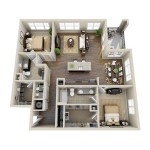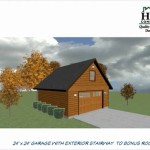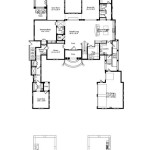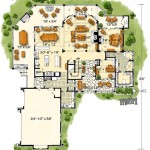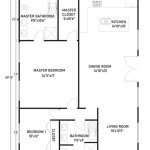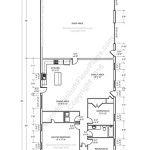Tiny Home Plans With Material List: A Comprehensive Guide
The allure of tiny home living continues to grow, driven by a desire for financial freedom, reduced environmental impact, and a simplified lifestyle. Embarking on the journey of building a tiny home, however, requires meticulous planning and execution. A crucial component of this process is having access to well-defined tiny home plans that include a detailed material list. This document serves as a roadmap, guiding the builder through each stage of construction and ensuring that all necessary materials are accounted for.
This article provides a comprehensive guide to understanding tiny home plans with material lists. It will explore the key elements of these plans, highlight the importance of accurate material costing, and offer advice on where to find suitable plans for various budgets and skill levels. Moreover, it will investigate the different types of plans available and explain why selecting the right plan is a critical first step in realizing your tiny home dream.
Understanding the Key Components of Tiny Home Plans
Tiny home plans are more than just blueprints; they are comprehensive guides that detail every aspect of the building process, from foundation to finishing. A complete set of plans typically includes several essential components:
Architectural Drawings: These drawings depict the overall design of the tiny home, including the floor plan, elevations (views from different sides), and sections (cross-sectional views). They provide a visual representation of the finished product and illustrate how the various components fit together.
Structural Drawings: These drawings focus on the structural integrity of the tiny home, detailing the framing, roofing, and foundation. They specify the type and size of lumber to be used, as well as the spacing and connections between structural members. Adherence to these drawings is essential to ensure the safety and stability of the dwelling.
Electrical Plans: Electrical plans outline the entire electrical system, including the location of outlets, switches, lighting fixtures, and the main electrical panel. They specify the type and gauge of wiring to be used and provide information on grounding and circuit protection. Electrical work is best left to professionals, but understanding the electrical plan is important even for those who subcontract this phase.
Plumbing Plans: Plumbing plans illustrate the layout of the water supply and drainage systems, including the location of pipes, fixtures (sinks, toilets, showers), and water heaters. They specify the type and size of pipes to be used and provide information on venting and water pressure regulation. Similar to electrical work, plumbing often requires specialized skills and may be subcontracted.
Mechanical Plans (HVAC): If the tiny home includes a heating, ventilation, and air conditioning (HVAC) system, mechanical plans will detail the layout of the ductwork, the location of the furnace or air conditioner, and the type of equipment to be used. These plans are crucial for ensuring proper ventilation and temperature control within the tiny home.
Material List: The material list is a comprehensive inventory of all the materials required to build the tiny home, including lumber, roofing materials, siding, windows, doors, insulation, electrical components, plumbing fixtures, and fasteners. The list typically includes the quantity, size, and type of each material, as well as a unit cost and total cost. A detailed and accurate material list is essential for budgeting and purchasing materials effectively.
The Importance of an Accurate Material List for Tiny Home Construction
The material list plays a pivotal role in the success of a tiny home project. It serves as the foundation for budgeting, purchasing, and managing materials, preventing costly overruns and delays. The importance of an accurate material list can be summarized as follows:
Budgeting and Cost Control: A detailed material list allows for accurate cost estimation. By researching the prices of each material and multiplying by the required quantity, the builder can develop a realistic budget for the project. This prevents unexpected expenses and helps to keep the project on track financially.
Material Procurement: The material list serves as a shopping list, guiding the builder in purchasing the necessary materials from lumberyards, hardware stores, and other suppliers. It ensures that all required items are acquired before construction begins, minimizing delays and preventing the need for frequent trips to the store.
Waste Reduction: An accurate material list helps to minimize waste by ensuring that only the necessary quantities of materials are purchased. This is particularly important for projects that aim to be environmentally friendly. Careful planning and accurate material estimation contribute to sustainable building practices.
Project Management: The material list serves as a valuable tool for project management. It allows the builder to track the progress of the project and identify any potential delays or shortages. By monitoring the consumption of materials, the builder can ensure that the project stays on schedule and within budget.
Avoiding Costly Mistakes: A detailed material list helps to prevent costly mistakes by ensuring that the correct type and size of materials are used. Using the wrong materials can lead to structural problems, code violations, and aesthetic issues, all of which can be expensive to correct.
Finding Tiny Home Plans with Material Lists
Several resources are available for locating tiny home plans that include detailed material lists. The choice of resource will depend on the builder's budget, skill level, and the complexity of the desired design. Here are some common options:
Online Marketplaces: Numerous online marketplaces offer a wide selection of tiny home plans, often designed by architects and experienced builders. These marketplaces typically allow users to browse plans by size, style, and features, and to filter results based on specific criteria. Examples include Etsy, and specialized tiny home plan websites. Read customer reviews and thoroughly examine the included documentation to ensure the plan meets your needs.
Architects and Designers: Hiring an architect or designer to create custom tiny home plans is an excellent option for those who have specific design requirements or who want a truly unique dwelling. While this option is more expensive than purchasing pre-designed plans, it allows for greater flexibility and ensures that the plans are tailored to the builder's individual needs and preferences. A custom design also offers the opportunity to optimize the tiny home for a specific climate or building site.
Building Supply Companies: Some building supply companies offer tiny home plans as a value-added service to their customers. These plans may be free or offered at a discounted price. However, it is important to carefully review the plans to ensure that they meet all applicable building codes and that the material list is accurate and complete.
Books and Publications: A variety of books and publications on tiny home construction include plans and material lists. These resources can be a valuable source of inspiration and practical information. However, it is crucial to verify that the plans are up-to-date and compliant with current building codes. Furthermore, the material lists may need to be adjusted based on local prices and availability.
Types of Tiny Home Plans Available
Tiny home plans come in a variety of styles and configurations to suit different needs and preferences. Understanding the different types of plans available is essential for selecting the right plan for your project:
Tiny House on Wheels (THOW) Plans: These plans are designed for tiny homes that are built on trailers, allowing them to be easily moved from one location to another. THOW plans typically include details on trailer selection, weight distribution, and tie-down methods. They also address specific considerations related to plumbing and electrical systems for mobile dwellings.
Tiny House on Foundation Plans: These plans are designed for tiny homes that are built on permanent foundations, such as concrete slabs or piers. These homes are subject to local building codes and regulations. These plans typically include details on foundation construction, structural support, and compliance with energy efficiency standards.
Modern Tiny Home Plans: Modern tiny home plans often feature sleek, minimalist designs with clean lines and open floor plans. They may incorporate sustainable building materials and energy-efficient technologies. These plans typically prioritize functionality and maximizing space within a small footprint.
Traditional Tiny Home Plans: Traditional tiny home plans often feature rustic designs that evoke a sense of warmth and charm. They may incorporate reclaimed materials and natural finishes. These plans often prioritize comfort and a connection to nature.
DIY Tiny Home Plans: Some plans are specifically designed for do-it-yourself builders, with detailed instructions and step-by-step guidance. These plans typically break down the construction process into manageable tasks and provide tips for working with limited tools and resources. DIY plans are often a more affordable option for those who are willing to invest their time and effort into building their own tiny home.
Factors to Consider When Choosing Tiny Home Plans
Selecting the right tiny home plan is crucial for the success of the project. Several factors should be considered when making this decision:
Budget: The cost of the plans, as well as the estimated cost of materials and labor, should be carefully considered. Free or low-cost plans may seem appealing, but they may lack the detail and accuracy needed to ensure a successful build. Investing in well-designed plans can save money in the long run by preventing costly mistakes and delays.
Skill Level: The complexity of the plans should be appropriate for the builder's skill level. Novice builders should choose simpler plans with clear instructions and readily available materials. More experienced builders may be able to tackle more complex designs.
Building Codes and Regulations: It is essential to ensure that the plans comply with all applicable building codes and regulations. Local authorities should be consulted to determine specific requirements. Failure to comply with building codes can result in delays, fines, and even the demolition of the tiny home.
Climate and Location: The plans should be appropriate for the climate and location where the tiny home will be built. Factors such as temperature, humidity, wind, and snow load should be considered. Modifications may be needed to ensure that the tiny home is durable and energy-efficient in its specific environment.
Personal Preferences: The plans should reflect the builder's personal preferences and lifestyle. The size, layout, and features of the tiny home should be tailored to the builder's individual needs and desires. Consider how the space will be used and what features are most important.

Tiny Project House Floor Plans Construction Sketchup On Wheels Blog

Tiny House Plans Camila

Tiny House Plans The Project

16 Cutest Tiny Home Plans With Cost To Build Craft Mart

16 Cutest Tiny Home Plans With Cost To Build Craft Mart

27 Adorable Free Tiny House Floor Plans Small

Little House
:max_bytes(150000):strip_icc()/ana-tiny-house-58f8eb933df78ca1597b7980.jpg?strip=all)
4 Free Diy Plans For Building A Tiny House

16x22 Tiny House Plans Design

27 Adorable Free Tiny House Floor Plans Craft Mart

